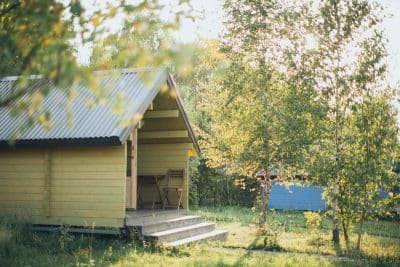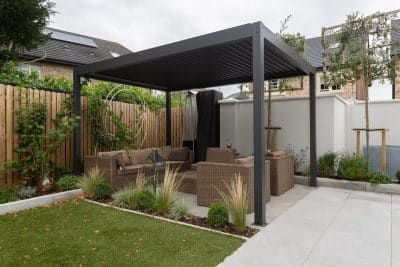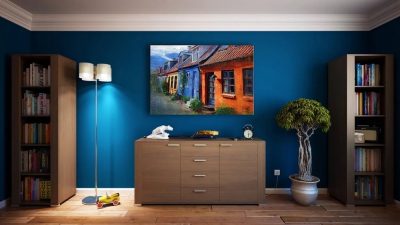
Growing older isn’t about giving up—it’s about adapting your surroundings so that your home continues to nurture your independence. Yet as the years pass, mobility can decline, eyesight may tire, and balance can feel more fragile. Spaces that once felt welcoming can suddenly seem full of obstacles.
Aging-in-place design anticipates these changing needs with subtle yet powerful solutions: slip-resistant finishes that marry texture and safety, adaptive lighting that delivers clarity without glare, ergonomic furnishings that blend seamlessly with your décor, and invisible technology that watches over you without intruding. On top of that, integrating zero-cost medical alerts offers peace of mind—help is always just a button-press away, with no monthly fees or visual clutter.
Below, we’ll explore every zone—from the entryway through to invisible tech—to show how thoughtful interventions can transform your home into a safe, elegant haven for every age.
1. The Entryway: Your Home’s First Line of Defense
A welcoming foyer can also be a safety checkpoint. By rethinking your entryway, you ensure that each arrival and departure is both comfortable and secure.
- Motion-sensor lighting: Soft illumination activates as you approach, eliminating fumbling in the dark.
- No-step thresholds: Seamless transitions prevent walkers or rollators from catching.
- Lever handles & smart locks: Effortless operation for hands affected by arthritis.
- Built-in bench seating: A discreet, sturdy spot to sit while removing or putting on shoes.
These upgrades make your entryway a sanctuary of accessibility and warmth—setting a confident tone for the rest of your home.
2. The Living Room: Open, Clutter-Free, and Inviting
The living room hosts life’s best moments—but hidden hazards can spoil the fun. A few simple tweaks can clear pathways, improve seating support, and layer lighting for both ambiance and safety.
- Secure or remove area rugs: Use non-slip pads to anchor them in place.
- Seating with armrests: Chairs and sofas with sturdy arms aid sitting and standing.
- Maintain clear walkways: Leave at least 36 inches between furniture pieces.
- Layered lighting: Combine ambient light with adjustable task lamps.
- Discreet tech: Embed voice assistants and emergency buttons into your décor.
With these changes, your living room remains an open, welcoming space that safely supports every activity.
3. The Kitchen: Empowerment at Every Meal
Cooking and dining should feel empowering, not taxing. Ergonomic storage, supportive hardware, and strategic lighting keep your kitchen both stylish and safe.
- Waist-height storage: Place everyday items on easily reachable shelves and drawers.
- D-shaped pulls: Replace knobs with handles that provide a comfortable grip.
- Slip-resistant flooring: Textured vinyl or cork adds traction and warmth.
- Intuitive appliances: Look for large, clear controls and automatic shut-off.
- Under-cabinet task lighting: Illuminates counters to spot spills early.
A thoughtfully arranged kitchen lets you continue culinary routines with confidence and flair.
4. The Bathroom: Spa-Inspired Safety
Bathrooms pose significant fall risks, but they can become serene retreats. Curbless showers, supportive fixtures, and visual cues work together to keep you secure without compromising on style.
- Walk-in shower with grab bars: Curbless entry and built-in seating feel both safe and luxurious.
- Comfort-height toilet: Raised seats ease sit-to-stand movements.
- Handheld showerhead on slide bar: Adjusts to any height or ability.
- High-contrast finishes: Define edges and depths for clearer perception.
- Dual-purpose rails: Serve as towel holders and reliable supports.
These spa-level upgrades ensure your bathroom is both elegant and accident-resistant.
5. The Bedroom: Restful, Accessible, Safe
Your bedroom should be a haven for sleep and a safe route for nighttime trips. Clear paths, gentle night lighting, and accessible storage create a restful, secure retreat.
- Clear 36-inch pathways: Keep the route from bed to bathroom free of obstacles.
- Motion-sensor nightlights: Provide subtle guidance without harsh glare.
- Knee-height beds (20–23 inches): Align with knee level for effortless transfers.
- Bedside organization: Shelves within reach hold phone, glasses, and essentials.
- Soothing color palette: Soft hues reduce visual confusion in low light.
With these touches, your bedroom supports both restorative sleep and safe, nighttime navigation.
6. The Stairs: Rethinking Vertical Movement
Stairs can be a barrier—but they can also become a feature. Enhanced rails, visual cues, or even a discreet stair lift keep vertical circulation accessible.
- Dual handrails: Install on both sides, extending beyond the first and last steps.
- Contrasting step nosing: Improves visibility of each tread edge.
- Optional stair lifts or single-level living: Adapt your home layout as needs evolve.
These options ensure you can move between levels with confidence and grace.
7. Lighting: The Silent Guardian
Proper lighting prevents accidents and uplifts the mood—often without notice. A layered approach to illumination turns every room into a safe, inviting space.
- Ambient, task, and accent lights: Work together to eliminate shadows.
- Maximize natural light: Use sheer curtains and strategically placed mirrors.
- Easy-use switches: Large rocker or touch controls near entrances.
- Tunable color temperatures: Warm for relaxing evenings, cool for detailed tasks.
Thoughtful lighting design both safeguards and beautifies your home environment.
8. Invisible Tech: Protection That Blends In
Modern safety solutions can disappear into your décor—yet always be on guard. From voice commands to background fall detection, technology can protect without intruding.
- Voice-activated controls: Adjust lights and temperature hands-free.
- Inactivity sensors: Alert loved ones if something seems amiss.
- Wearable alert pendants: Styled like jewelry, ready to call for help.
- Background fall detection: Monitors continuously without disrupting aesthetics.
This invisible tech layer lets your home care for you quietly, so you can focus on living fully.
General Conclusion
In essence, aging in place is the art of shaping your home so it grows with you—without losing its charm. Through discreet interventions—slip-resistant finishes, adaptive lighting, ergonomic furnishings, and invisible tech—each corner transforms into a refuge of comfort and safety. By investing in beautiful, functional spaces, you honor independence at every age and ensure that home remains a place of joy, freedom, and peace of mind.








